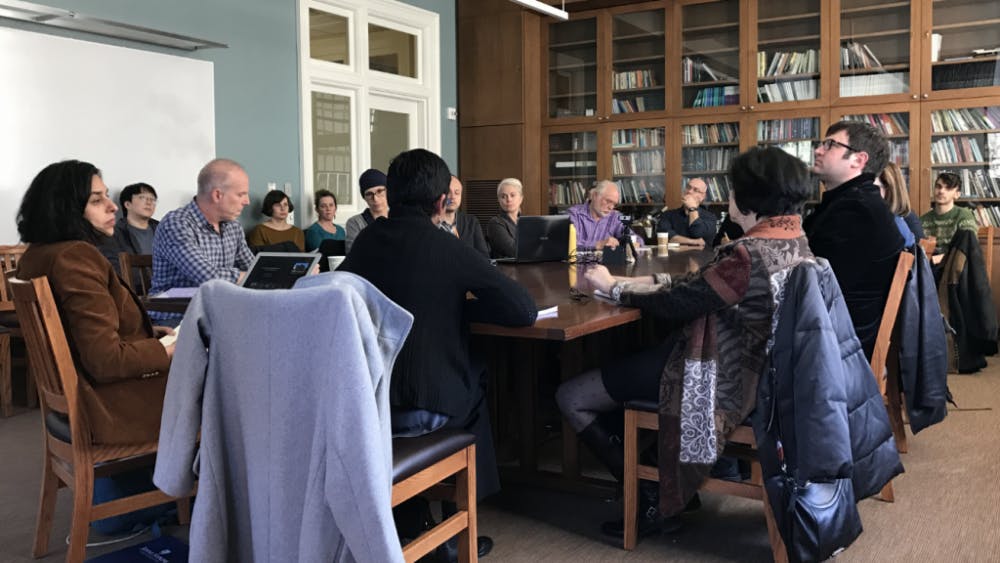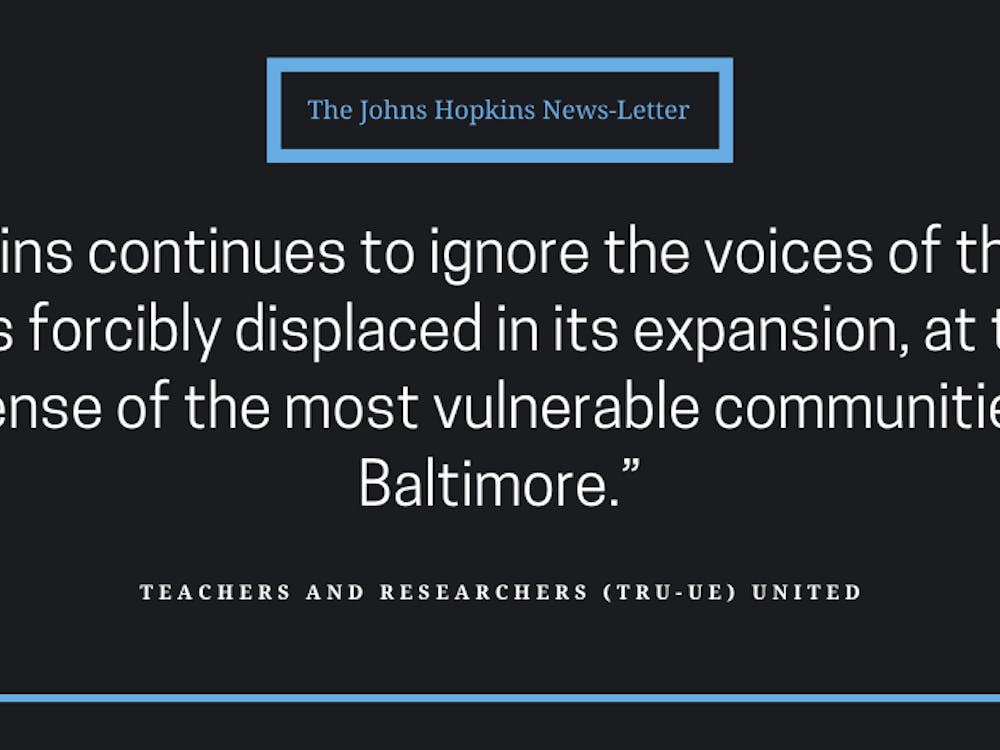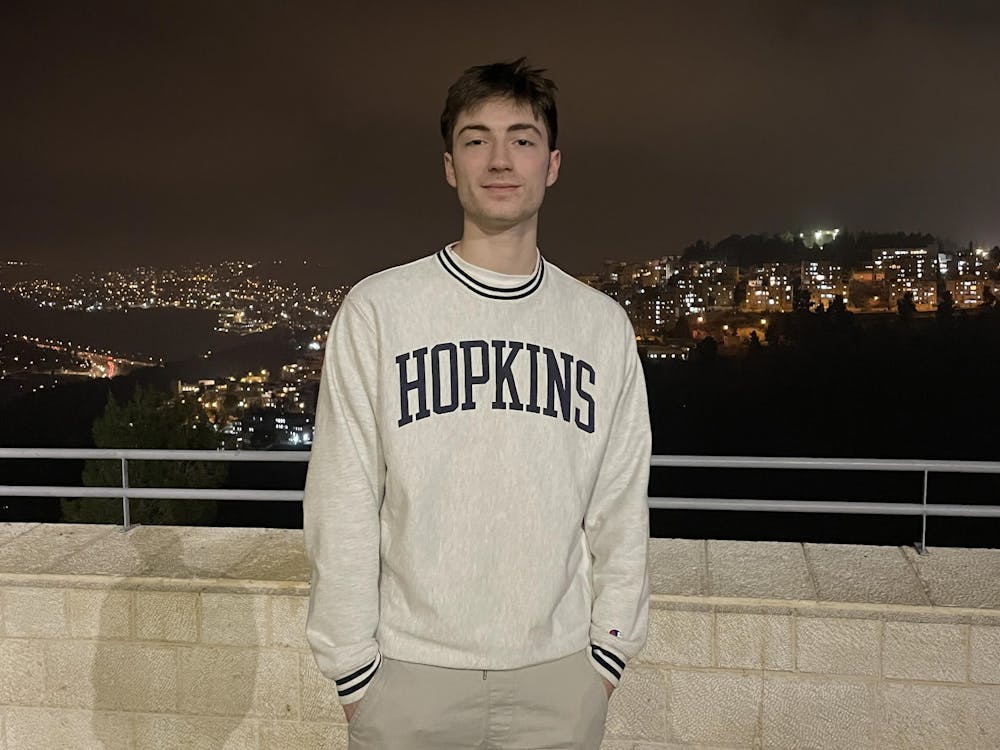New York University professor Sonya Posmentier previewed her most recent work in a reading titled “Black reconstruction and the Anthropocene” on Friday, Dec. 2. Posmentier stressed how important it is to challenge the American historical narrative, which she claims has been primarily determined by white men.
Several Hopkins affiliates hosted the event, including the Alexander Grass Humanities Institute (AGHI) and the Center for Africana Studies. The reading was part of the Institute’s Critical Climate Thinking Lecture Series, which aims to generate conversation about climate change as part of the collective human experience rather than just within a scientific context.
Posmentier’s essay addresses two works of art as a way to reflect on black culture in the geological age she refers to as the Anthropocene.
“Recent work by historians and literary scholars taking up... critical climate thinking engages the widely accepted scientific thesis that we have by now passed from the Holocene to the geological age of the human, or the Anthropocene,” she said.
She also identified the rising interest in artistic expression as a representation of the human experience in post-colonial and race studies.
Many recent scholars have argued that global warming calls attention to the need for re-examining and revising history, which some believe has a ‘whitewashed’ perspective. Posmentier said that this was especially relevant when considering the perspective of oppressed minorities during the relatively recent history of post-colonialism.
In her essay, Posmentier considers two art exhibitions by black women that respond to the historical narrative of colonialism as written by white men. They are A Subtlety, or the Marvelous Sugar Baby by Kara Walker and Funk, God, Jazz, and Medicine: Black Radical Brooklyn.
Posmentier briefly explained why she chose these exhibitions before launching into an analysis of their implications for postcolonial black culture.
“These works take out the defining tension between growth, repair, generation and continuity on the one hand and displacement, rupture and singularity on the other that defines cultivation and catastrophe through their pronounced relationship to two different historical periods, U.S. enslavement and U.S. reconstruction,” she said. “Both of the works draw upon a reparative aesthetic in relationship to historical slavery... but they also invite us to rethink environmental relation as a process of ongoing reconstruction.”
Walker’s A Subtlety is an enormous sculpture of sugar depicting a black woman with highly exaggerated features. It is housed in an abandoned sugar warehouse in Brooklyn. The exhibition was open for three months during the summer of 2014 and was then intentionally demolished.
Funk, God, Jazz, and Medicine: Black Radical Brooklyn was situated in the historic center of Weeksville, a community in New York established by free and formerly enslaved black citizens after the abolition of slavery. Participants were able to walk through a fully furnished housed with recycled materials that reflected postcolonial black culture.
Posmentier argued that these works reflected the need for considering environmental change when re-examining history.
“We might think of Bailey’s project as an ecological one insofar as Funk... is an aesthetic of recycling and reuse, connecting a symbolic sense of reconstruction with the ethos of self-determination that pervaded the historical period,” she said.
Though she identified that both works could be examined through an environmental lens, she contrasted the different ways in which they achieved this.
“Unlike the resource-intensive and earth-exhausting processes of cultivation — processes which Walker’s work alludes to and mimics — Bailey’s product seeks to make use of existing resources in what she calls a ‘Funktional’ way,” Posmentier said.
Christopher Nealon, chair of the English Department, spoke briefly in reaction to the essay and then invited the other listeners to ask questions and provide feedback.
One graduate student brought up the importance of interdisciplinary study, and referenced the ongoing controversy surrounding the Humanities Center. In response, Posmentier emphasized some of the consequences of being “anti-disciplinary.”
“Thinking about collaborative modes of study that will allow us to break out of disciplinary thought are important,” she said. “The stakes of being anti-disciplinary are racial, the stakes are to challenge racial foundations of the things that we’ve historically called disciplines.”























Please note All comments are eligible for publication in The News-Letter.